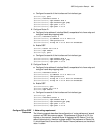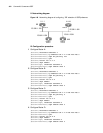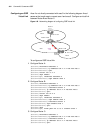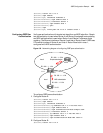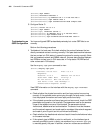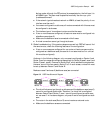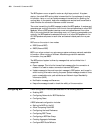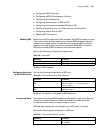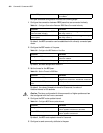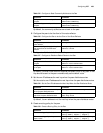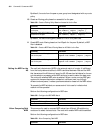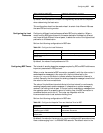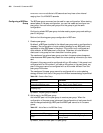
30
CONFIGURING BGP
This chapter covers the following topics:
■ BGP Overview
■ Configuring BGP
■ Displaying and Debugging BGP
■ BGP Configuration Example
BGP Overview Border Gateway Protocol (BGP) is an inter-AS dynamic route discovery protocol. Its
primary function is to exchange loop-free routing information between ASs
automatically and to construct the topology diagram of an AS through the
exchange of path reachability information, including AS numbers. It constructs the
topological diagrams of the ASs to eliminate route loops and carry out user
configured strategies. The BGP protocol is usually used between ISPs.
The current version of BGP is BGP- 4. It applies to the distributed structure and
supports classless interdomain routing (CIDR). BGP-4 has become the standard of
Internet external routing protocol. It features the following:
■ BGP is an external routing protocol, oriented to control route spreading and
select best route rather than find and calculate route. This is different from the
internal routing protocol.
■ Completely resolves the route loop problem by carrying AS path information.
■ Uses TCP as the transmission layer protocol, improving the reliability of the
protocol.
■ BGP-4 supports classless interdomain routing (CIDR), or supernetting. CIDR
judges the IP address in a totally new way. It no long recognizes network class
A, network class B, or network class C. For example, with CIDR, an illegal class
C network address 192.213.0.0 (255.255.0.0) is indicated as 192.213.0.0/16,
which is a legal supernetwork. /16 means that the subnet mask is 16bit starting
from the left of the address. The introduction of CIDR simplifies the route
aggregation. Route aggregation is the combination of several routes. Thus one
route instead of several routes are distributed and the routing table is
simplified.
■ When a route is updated, BGP only sends the incremental route. In this way,
BGP occupies much less bandwidth in transmitting routes. It applies to the
transmission of a large amount of routing information on the Internet.
■ For political and economic reasons, each AS must filter, select and control the
routes. BGP-4 provides abundant routing strategies for easy expansion of BGP
to support new developments of the Internet.



